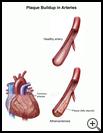
Deep Vein Thrombosis (DVT)
What is deep vein thrombosis (DVT)?
Deep vein thrombosis (DVT) occurs when a blood clot forms in a deep-lying vein, usually in the legs. Blood clots are dangerous because the clot may break loose, travel through your bloodstream, and block arteries in your lungs, causing permanent damage or death.
You are at a higher risk for forming a DVT if:
- You must lie or sit still for a long time when recovering from an illness or injury, such as after surgery, while wearing a cast, or when taking a long plane flight or car ride
- You ability to move around is limited due to a serious medical condition, such as chronic lung disease, severe obesity, or a heart condition
- You have inherited a blood-clotting disorder
- You take a medicine that increases the tendency for blood to clot, such as birth control pills
- You have a cancer condition that increases the risk of blood clot
What can I expect in the hospital?
Several things may be done while you are in the hospital to monitor, test, and treat your condition. They include:
Monitoring
- You will be checked often by the hospital staff.
- A heart (cardiac) monitor may be used to keep track of your heartbeat.
- Your blood oxygen level will be monitored by a sensor that is attached to your finger or earlobe.
- Your legs may be measured to compare the size of the affected leg with the normal leg.
Testing
Testing may include:
- Blood tests to check blood thickness and its ability to form clots
- Ultrasound scan uses sound waves to create pictures of the inside of the blood vessels to help locate any clots or narrowing of veins, and measure how fast the blood flows through the veins.
- Contrast demography (venogram) uses X-rays taken after contrast dye is injected into a vein to show any blockages in your veins
- Impedance plethysmography (IPG) is a test in which your healthcare provider or a technologist places a pressure cuff on your arm or leg to measure how well the blood is flowing through your veins.
- Computed tomography (CT) scan is a series of X-rays taken from different angles and arranged by a computer to show thin cross sections of the blood vessels.
Treatment
- The goals of treatment are:
- Prevent the clot from getting bigger
- Prevent complications of the clot, such as a stroke
- Allow time for the clot to dissolve
- Prevent new clots
- Treatment may include:
- You will have a small tube (IV catheter) inserted into a vein in your hand or arm. This will allow medicine to be given directly into your blood and to give you fluids, if needed.
- You may receive oxygen through a small tube placed under your nose or through a mask placed over your face.
- Your provider may prescribe medicine to:
- Dissolve or break down blood clots
- Prevent blood clots
- Treat pain
- Treat or prevent an infection
- Your provider may recommend other types of therapy to help relieve pain, other symptoms, or side effects of treatment.
- Your healthcare provider will also prescribe bed rest to help reduce the risk that a piece of the clot will break off and cause problems somewhere else in your body.
- Your provider may recommend surgery for an inferior vena cava (IVC) filter placement. The inferior vena cava is a large vein in your abdomen that carries blood from your body back to your heart. The filter is a tiny cone-shaped metal net that can trap blood clots.
- You may need surgery to remove the blood clot.
What can I do to help?
- You will need to tell your healthcare team if you have any new or worsening:
- Shortness of breath
- Chest pain
- Coughing up blood
- Bluish color and coldness in your arm or leg
- Swelling, warmth, redness, or pain in your arm or leg
- Dizziness or lightheadedness
- Headaches
- Abdominal pain
- Weakness
- Unusual bruising, cuts that do not stop bleeding or blood in your bowel movement
- Signs of infection around your surgical wound if you had surgery. These include:
- The area around your wound is more red or painful
- The wound area is very warm to touch
- You have blood, pus, or other fluid coming from your wound area
- You have chills or muscle aches
- Ask questions about any medicine or treatment or information that you do not understand.
How long will I be in the hospital?
How long you stay in the hospital depends on the size of the clot, how easily medicines dissolve the clot, and the reason the clot formed. The average amount of time to stay in the hospital after DVT is 5 to 7 days.
Most people need to take blood thinner medicines for 3 to 6 months after they leave the hospital. If you have a very high risk of getting more clots, you may need to take a blood thinner for the rest of your life.
Last modified: 2016-05-17
Last reviewed: 2016-05-16


